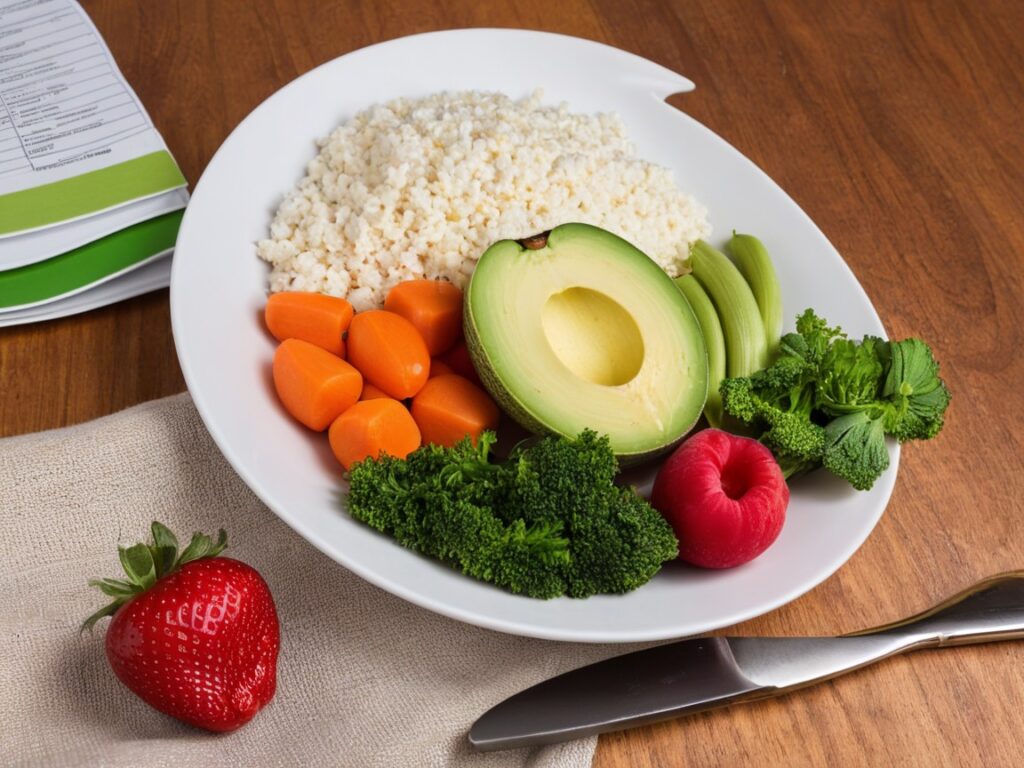Healthy Eating on a Budget: Tips and Strategies for Nutritious Meals Without Breaking the Bank
Eating healthy doesn’t have to mean spending a fortune at the grocery store. With a little planning, smart choices, and a few simple strategies, it’s entirely possible to enjoy nutritious meals while keeping your budget intact. Whether you’re trying to stick to a tight budget or simply want to make the most of your grocery spending, here are some practical tips to help you eat well without overspending.
1. Plan Your Meals (and Stick to the Plan!)
One of the most effective ways to save money on healthy food is to plan your meals for the week. Take some time to look through recipes, and create a shopping list based on what you need. This helps you avoid buying unnecessary items and ensures you only purchase what you’ll actually use. Planning also means you can take advantage of sales or buy in bulk for recipes you know you’ll make multiple times.
Tip: Try to plan meals that use similar ingredients across multiple days. For example, if you buy a bag of spinach, plan to use it in salads, smoothies, and cooked dishes throughout the week.
2. Shop in Season and Buy Local
Seasonal produce is often more affordable and fresher than out-of-season items. By shopping for fruits and vegetables that are in season, you’re not only saving money, but you’re also getting the best flavor and nutrition. Farmers’ markets can also be a great place to find local, affordable produce. You may be able to find better deals by buying directly from the source.
Tip: If you’re unsure about which fruits and veggies are in season, ask your local store or market vendor, or look up a seasonal produce guide online.
3. Buy in Bulk (When It Makes Sense)
When it comes to pantry staples like beans, lentils, rice, and oats, buying in bulk can save you a significant amount of money. Bulk buying also means you won’t have to make frequent trips to the store, helping reduce impulse purchases. Just make sure you have the storage space to keep everything fresh.
Tip: Invest in airtight containers to store bulk items properly. This will help maintain the freshness and prevent waste.
4. Embrace Frozen Fruits and Vegetables
Frozen fruits and vegetables are often just as nutritious as fresh ones but come at a lower price. They’re also available year-round, which means you can enjoy your favorite produce even when it’s not in season. Plus, frozen options typically last longer, reducing the risk of food spoilage.
Tip: Keep a variety of frozen vegetables and fruits in your freezer for easy additions to meals, smoothies, or snacks.
5. Cook at Home and Avoid Takeout
Preparing meals at home is one of the most effective ways to save money while eating healthy. Not only will you have control over the ingredients and portion sizes, but home-cooked meals are typically far less expensive than eating out or ordering takeout. Try simple recipes with minimal ingredients that you can make in batches.
Tip: Invest in a slow cooker or Instant Pot to make bulk cooking easier. These appliances are great for making stews, soups, and casseroles that can be enjoyed for multiple days.
6. Buy Store Brands
When shopping for packaged goods, opt for store brands instead of name-brand products. Store brands often contain the same ingredients as their more expensive counterparts but are priced much more reasonably. This is especially true for staples like pasta, grains, canned vegetables, and dairy products.
Tip: Look at the ingredient list to ensure the quality of the store-brand items. Often, they are virtually identical to the brand-name version.
7. Minimize Food Waste
Reducing food waste is not only good for the environment but it can save you money in the long run. Make use of leftovers by repurposing them into new meals or using them in snacks. Additionally, storing food properly (and keeping track of what you already have in the pantry) will help prevent items from going bad before you use them.
Tip: If you have leftover vegetables, make a simple soup or stir-fry. Even fruit can be frozen and blended into smoothies.
8. Focus on Plant-Based Proteins
Meat can be one of the most expensive items in your grocery cart. A great way to save money while still getting enough protein is to focus on plant-based sources. Beans, lentils, tofu, and chickpeas are all affordable protein-packed options that can be used in a variety of dishes.
Tip: Try incorporating more vegetarian meals into your week. Dishes like lentil curry, black bean chili, and veggie stir-fries are filling and budget-friendly.
9. Look for Sales and Coupons
Before heading to the store, check for sales, discounts, or coupons that can help reduce your grocery bill. Many stores offer weekly promotions on items, and there are also apps and websites dedicated to helping you find the best deals.
Tip: Consider signing up for your store’s loyalty program to receive exclusive discounts and coupons.
10. Get Creative with Leftovers
One of the best ways to stretch your grocery budget is by getting creative with your leftovers. Leftover grains like rice or quinoa can be used as the base for salads, bowls, or stir-fries. Leftover roasted vegetables can be repurposed into frittatas or sandwiches. The more versatile your meals are, the less food you’ll waste.
Tip: Set aside time each week to create “leftover meals” from any food you have on hand. You might be surprised at the new combinations you can create!
By following these tips, healthy eating doesn’t have to be a costly endeavor. With some thoughtful planning, smart shopping, and creative cooking, you can nourish your body with wholesome foods without blowing your budget. It’s all about making the most of what’s available and focusing on nutrient-dense ingredients that can go a long way in your kitchen.
Healthy eating doesn’t have to be expensive—it’s all about making smarter choices!


